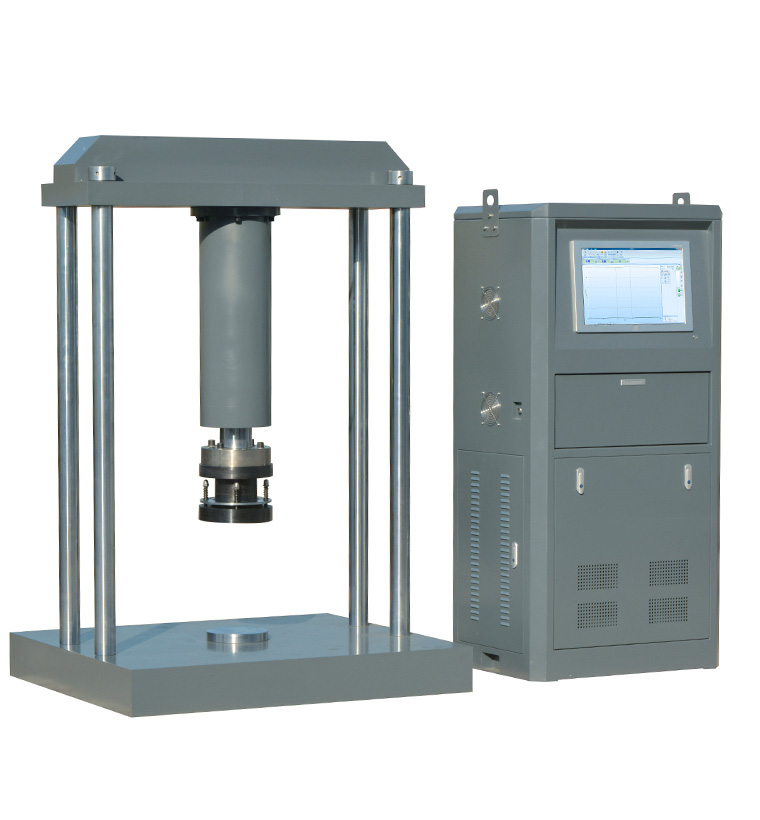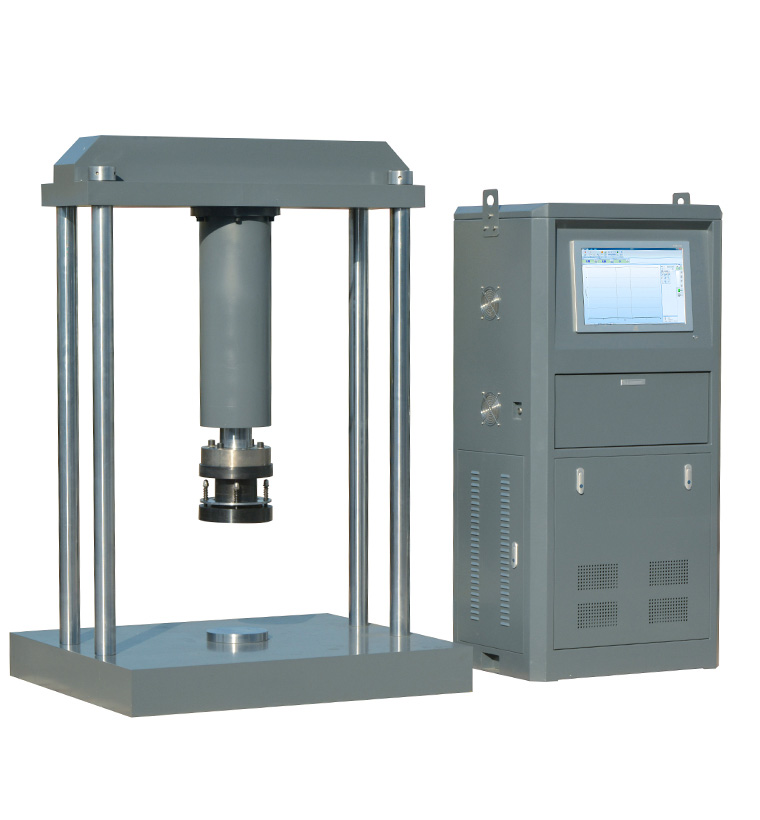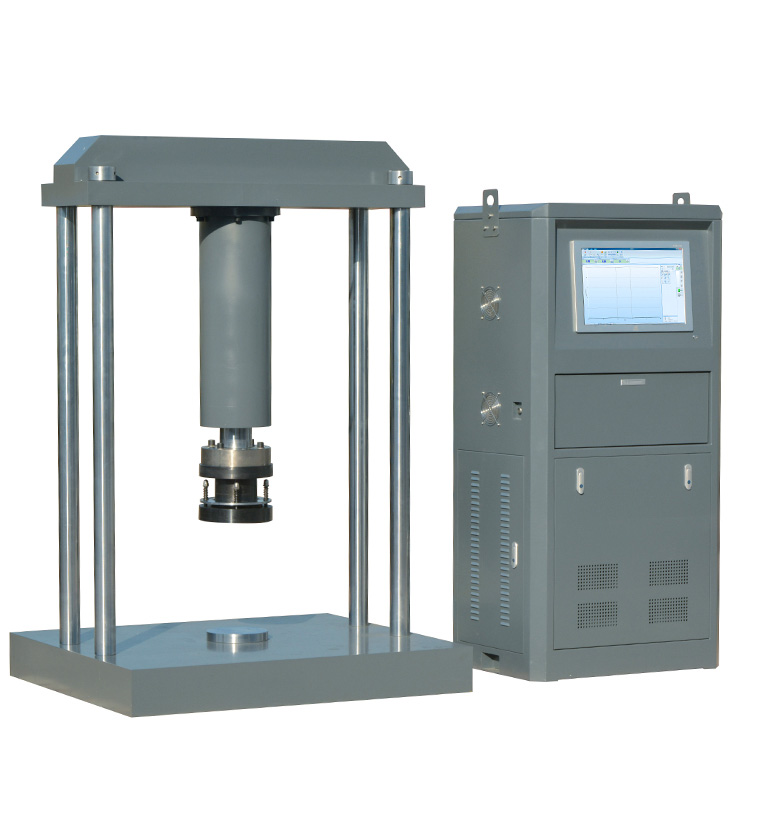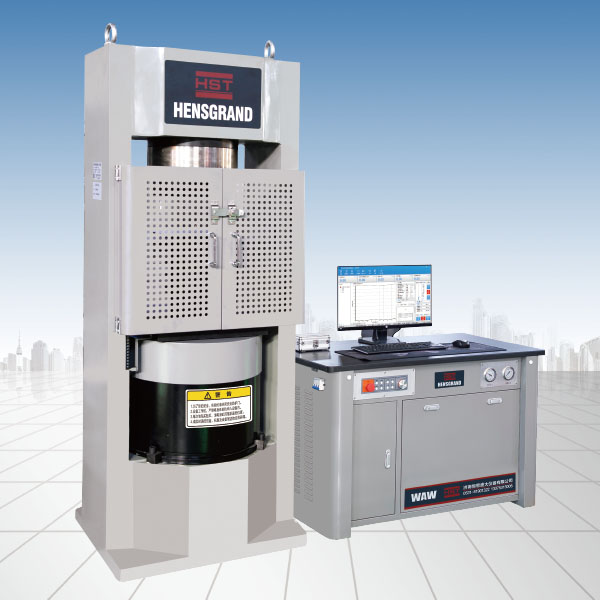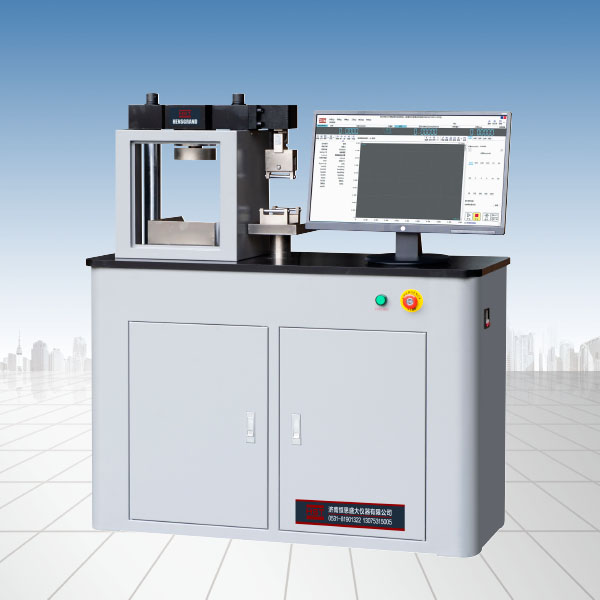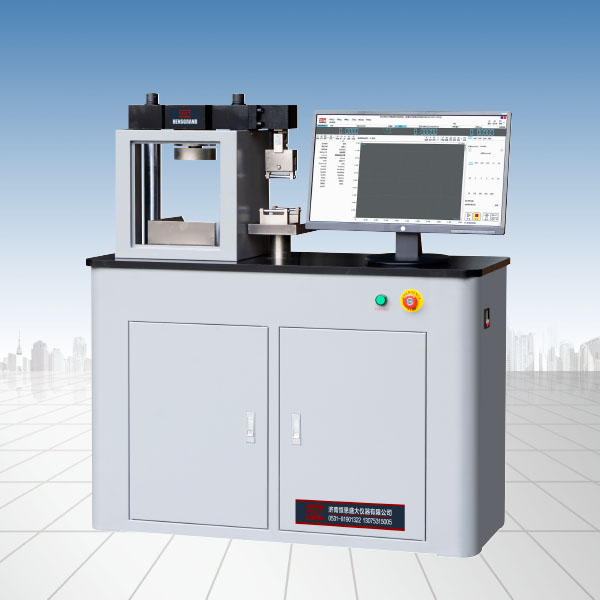Company News
How to choose the right rubber tension tester
Release time:2018-11-23 source:Jinan Hengsi Shanda Instrument Co., Ltd. Browse:
Detection of the tensile performance of rubber specimens is one of the important indicators of rubber quality testing. Almost all quality laboratories in rubber-related industries will be equipped with one and multiple rubber tensile testing machines. However, during maintenance, I found that the configuration of rubber tensile testing machines in many laboratories may not be able to fully meet the requirements of relevant standards. This is caused by unprofessional reasons for the user's testing machine selection personnel, and the inadequate communication between sales personnel of the manufacturer. Of course, there are some reasons why most industrial and mining enterprises have poor standards awareness and are reluctant to invest.
So, what kind of rubber tensile testing machine should we choose to do rubber tensile testing?
1. First of all, you should understand:According to relevant standards, what data do we need? Generally speaking, the following or seven parameters are required for the tensile test of rubber.
1. The force value (tensile strength) that occurs during the sample stretching to fracture;
2. Force value (breaking strength) when the sample is broken;
3. The force value corresponding to the yield point (tensile stress at the yield point);
4. The force value (fixed extension stress) when the sample is stretched to a given elongation;
5. The elongation rate of the sample when stretched to a given stress (fixed stress elongation);
6. Elongation corresponding to the yield point (elongation of the yield point);
7. Elongation rate when the sample is broken (elongation rate when it is broken).
2. According to the requirements of the above measured parameters. There are two data to be tracked during the rubber tensile test: the tensile force value and the gauge distance change.
Therefore, a rubber tensile test machine used to test rubber tensile propertiesThe following four requirements must be met:
1. Large itinerary.
Because rubber deformation is very large when stretched, especially latex products, the elongation may be as high as 1000%. Therefore, before the rubber sample breaks, it is necessary to ensure that the clamp has sufficient stroke.
2. High-precision and high-frequency data acquisition.
Tensile rubber does not require a large force, and the tension measurement range does not require a large force measurement, so the precision of the force value is required. Generally, the test machine is required to be able to obtain the force value with an accuracy of more than two digits after the decimal point. In addition, since detecting the tensile properties of rubber requires several tensile values during the tensile process, and the tensile test cannot be repeated, instant and accurate recording of the tensile force value of each test section plays a very important role in the success or failure of the test.
3. Accurate gauge measuring and recording device.
The measurement of the gauge distance of the sample is an important data for calculating the elongation of the rubber, so the tensile test machine must accurately measure the strain value of the sample and record it immediately.
4. A device that can accurately describe the stress-strain curve.
There is a close relationship between the tensile force value and gauge distance in a tensile sample. For example, the constant elongation stress of the sample requires measuring the force value of the tensile sample to a given elongation, while the fixed stress requires measuring the gauge distance from the tensile sample to a given stress. After the test is completed, the accurate stress-strain curve can reproduce the test process and clearly reflect the values of each test section, making it easier to calculate the items required by the test.
3. Reference for selecting rubber tensile testing machine for testers
Based on the above, the testers choose a suitable rubber tensile testing machine according to the following methods.
1. Test machine stroke range.
The gauge distance for ordinary standard thickness samples (the thickness of the dumbbell-shaped samples of type 1, 2, and 4 is 2.0±0.2mm, and the thickness of type 3 is 1.0±0.1mm) is generally within 1 meter when broken; special thickness samples, such as samples of medical rubber gloves, may exceed 1 meter when broken. Therefore, the moving range of the fixture is generally between 1 meter and 1.5 meter, which can be suitable for tensile tests of various rubber samples. It is not difficult to meet this requirement in practice, and the mechanical conveying part of the general rubber tensile testing machine can meet it.
2 Rubber tensile testing machine tensile measurement and recording device.
There are two main types of tension measurement and recording devices of tensile testing machines: mechanical instrument type and sensor type. The mechanical instrument-type tension measurement device mainly relies on the reaction force during the stretching process. It drives the pointer on the instrument panel to rotate and mark the tension value through mechanical conveying devices such as springs and weights, and uses traditional recorders to record the force value-time curve. The mechanical instrument tensile tester is cheap, but its performance cannot meet the requirements of rubber tensile test. It can only handle the tensile value alone, cannot record the subtle changes in the tensile value, and effectively connect the tensile value with the sample gauge distance. A tensile tester equipped with a tensile sensor with appropriate precision can accurately record the tensile value at each moment, and process and calculate it through relevant procedures to meet the requirements of rubber tensile test.
3. Testing machine gauge measuring and recording device.
The gauge distance measurement of rubber is an important part of tensile test, which directly affects the accuracy of the test. At this stage, there are two main methods for measuring gauge distances: manual measurement and automatic measurement. Manual measurement means to vertically set a ruler and two horizontal gauge rods that can move in the vertical direction next to the clamp moving rod. During tensile test, you can observe the changes in the gauge distance on the sample by your eyes, and manually control the two gauge rods to synchronize with the gauge distance on the sample, and record the movement distance of the gauge rod on the scale. The error of manual measurement is very large: First, observing the gauge distance with eyesight will cause a certain deviation; second, manually moving the gauge rod can never accurately track the gauge distance changes; third, while moving the gauge rod, it is difficult for the tester to record the gauge distance value, and it is even more impossible to accurately describe the stress-strain curve after the test.
Compared with automatic gauge measurement, it is more conducive to the detection of rubber tensile properties. Nowadays, the automatic gauge measuring devices of many tensile testing machines use contact sensors to measure the changes in gauge distances instantly. There are two main installation positions of the sensor mobile device: ① Installed on the fixture; ② on the sample. The sensor that installs the mobile device on the clamp has certain limitations. Because the elastic deformation of rubber is very large, there is a big difference between the moving distance of the clamp and the change value of the sample gauge distance, the gauge distance sensor installed on the clamp is more suitable for detecting the tensile properties of specimens with very small elastic deformation (such as metal materials), and cannot be used to detect the tensile properties of rubber.
Another installation method is to vertically set a grating ruler and two horizontal gauge rods with small clips (commonly known as: large deformation) next to the clamp moving rod. The installation method of this sensor is consistent with the principle of manual measurement mentioned above. The ruler is changed to a grating ruler and the manual operation is changed to the sample to drive the gear rod to move. The sensor installed on the gauge is suitable for tensile tests of metal or standard thickness rubber specimens, because the force value when stretching these specimens is large, and the force value that drives the gauge rod to move is very small. Although it will have a certain impact on the specimen, it is not enough to affect the success or failure of the entire test.
However, some special samples in rubber tensile performance testing cannot be measured by contact sensors, such as medical rubber glove samples. The main component of rubber gloves is natural latex. The tensile force value used during the tensile test is smaller than that of ordinary rubber products. At the same time, the GB7543-1996 "Rubber Medical Gloves" stipulates that the sample for tensile performance test is directly cut directly on the finished rubber medical gloves, so the cut sample is very small, about 0.2mm. In this way, the thick latex sample only requires a very small force value to stretch the sample for a long time. Therefore, the contact gauge measurement method will have a great impact on the sample tensile test. The reasons for the impact are as follows: First, the weight of the gauge rod contacting the sample will pull the sample downward, affecting the measurement of tension; Second, the clamping of the gauge rod has a certain impact on the stretching of the clamped part, so that it cannot stretch freely.
The above problems can be avoided by adopting a contactless video extensometer. One of the methods is to track the changes in the benchmark distance by using the camera method. The sample background is made of black rough and non-reflective material (such as black rough insulating tape). The gauge part (i.e. the part between the two gauge lines) is painted with a high contrast paint (if the sample is lighter, the gauge is covered with black pigment; if the sample is darker, the gauge is covered with white pigment), and the images collected by the camera are input to the computer to adjust the contrast so that the gauge boundary can be clearly distinguished on the computer. During the stretching process, the collected images are processed by a computer, the gauge lines are tracked, and the gauge values are tested in real time. This measurement method not only accurately measures the gauge value at each moment, but also does not affect the stretching process of the rubber.
*The above are all mechanical testing requirements for rubber materials. The relevant inspection of finished rubber parts cannot be completely referenced to the above method. For example, the author once selected a material testing machine for Kinugawa Rubber and Plastic Products China Co., Ltd. in Japan. It is necessary to perform equal load cycle compression tests, plug-in and pull-out force cycle tests, load-keeping tests, etc. in accordance with the finished product requirements. These tests are no longer possible to be completed by ordinary rubber tensile testing machines. The advancement of materials science and the improvement of quality standards will lead to more experimental requirements. Keeping pace with the times is the solution.
- Previous article:Indices and test methods for tensile tests
- Next article:Things to note about universal material testing machine
Recommended productsPRODUCTS


















